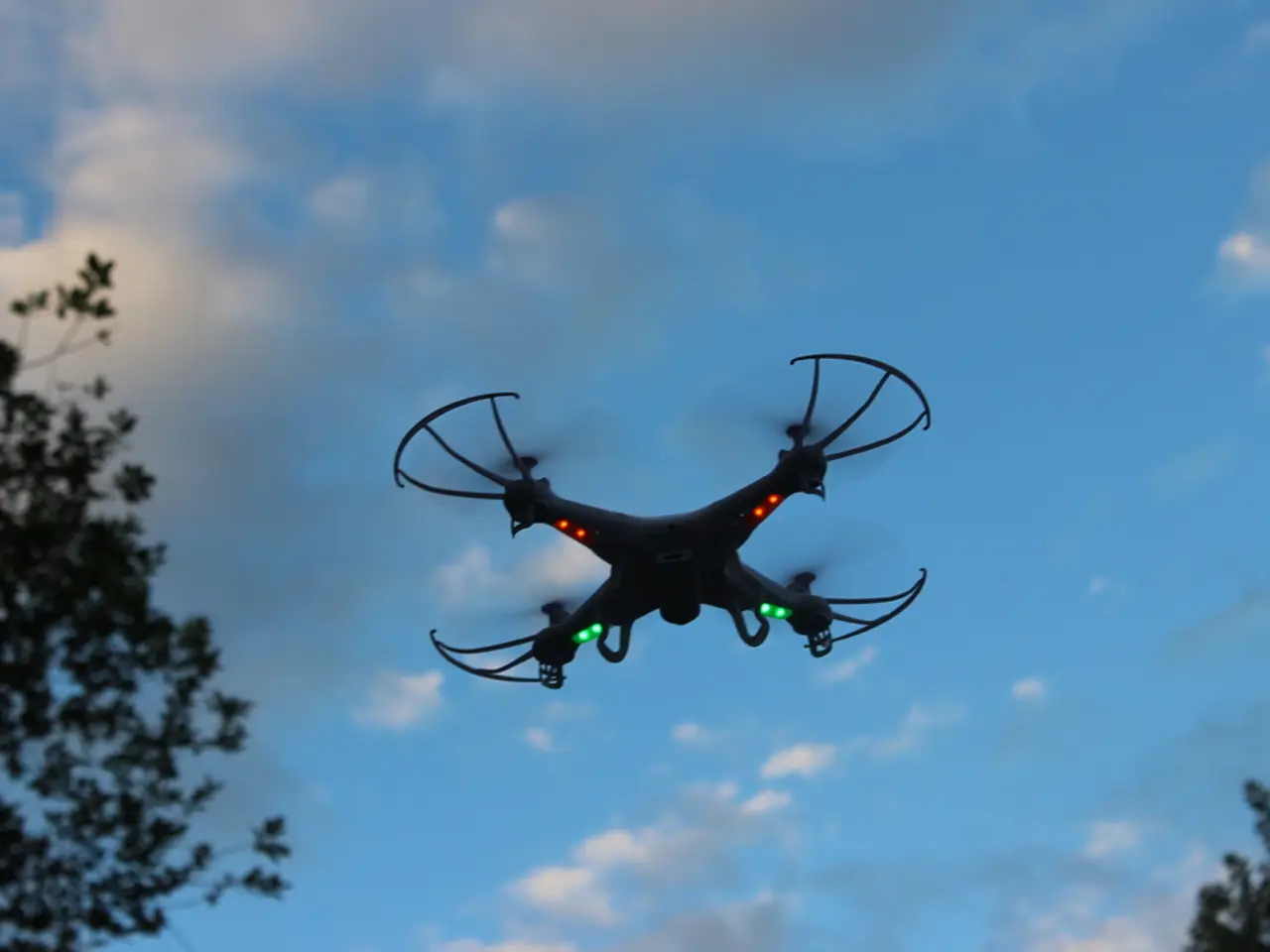Rapid Expansion of Military Drone Deployment and Countering Adversarial Attacks Promoted by Congressional Representatives to Defense Department
The US Congress is pushing for the rapid deployment of offensive small unmanned aerial systems (sUAS) in the defense sector, with strong legislative language in the 2026 National Defense Authorization Act drafts urging the Defense Department to expedite the fielding of such drones for both attack and surveillance roles.
The Pentagon is responding to this call by accelerating its adoption and deployment processes. By September 1, 2025, all military branches are required to establish experimental drone units to scale small drone usage rapidly across forces. The goal is to equip every Army squad with expendable ("one-way") attack drones, with Indo-Pacific units prioritized.
To overcome previous bottlenecks, the Defense Department has implemented stringent certification deadlines. Responses to certification requests are now expected within 14 days, and weapons approvals within 30 days. The "Blue sUAS" approval program, which maintains a list of Pentagon-approved drones, is being reformed and transferred from the Defense Innovation Unit to the Defense Contract Management Agency by January 2026, backed by expanded resources and staffing.
Defense Secretary Pete Hegseth has signed a directive aimed at removing bureaucratic barriers that hampered small drone adoption under the previous administration. This memo supports industrial base growth, acquisition reform, and rapid technology fielding to enhance lethality on the modern battlefield.
Meanwhile, the Department of Defense is also strengthening its counter-drone efforts with a layered defense strategy. This includes organizational reforms such as the Joint Counter-Small UAS Office, technological innovations involving advanced systems like LIDS, upgraded Stinger missiles, electronic warfare tools, and integrating drone capabilities into all major training events by 2027.
The House defense policy bill requires the military to buy anti-drone defenses to protect four facilities or assets and deploy them within a year. The Air Force Chief of Staff, Gen. David Allvin, has suggested that troops must train differently to defend bases from drones after decades without fear of airborne threats.
The House bill also codifies the Pentagon's Joint Counter-Unmanned Aircraft Systems Office as the joint organization responsible for coordinating the military's efforts to defeat small drones. The office is tasked with developing a counter-UAS strategy and working with U.S. Northern Command to roll out new equipment and tactics in the field.
The Republican-led tax-and-spending package provides $1.3 billion to bring on new counter-UAS equipment. The package includes $50 million to accelerate the development of autonomous, one-way attack drones, and $1 billion to grow the industrial base for those systems. The Pentagon is pledging to bolster U.S. drone manufacturing and rush them to the field.
Notably, Ukraine's surprise attack on Russian military aircraft using small drones demonstrated their potential for causing havoc. Lawmakers on both sides of Capitol Hill are pressing the Pentagon to deploy offensive small unmanned aerial systems. The Army's Coyote counter-UAS system, designed by Raytheon, could be useful for protecting Navy vessels. The House legislation orders the Air Force to launch a pilot program with the FAA to detect and identify troublesome drones loitering by domestic military installations.
The incident where drones surveyed Joint Base Langley-Eustis, Virginia, over the course of 17 nights in December 2023, and the military is still trying to determine who controlled them, highlights the importance of robust counter-drone systems. Senators are pushing the military's acquisition and research officials to revive American industry's ability to build small drones.
In summary, Congress is actively promoting offensive small drone deployment while pressing the Pentagon to reform and accelerate its policies and acquisition processes to meet the dual need for deploying attack drones and robust counter-drone systems globally. The Defense Department is instituting aggressive timelines, organizational restructuring, and technological innovations to fulfill these requirements effectively.
- The Pentagon is accelerating the adoption and deployment of small drones in response to the call from the US Congress.
- By September 1, 2025, every military branch is required to establish experimental drone units to scale the usage of small drones rapidly.
- The Defense Department has implemented stringent certification deadlines to overcome previous bottlenecks, with responses to certification requests expected within 14 days and weapons approvals within 30 days.
- Defense Secretary Pete Hegseth has signed a directive aimed at removing bureaucratic barriers to small drone adoption.
- The House defense policy bill requires the military to purchase anti-drone defenses and deploy them within a year, and the Air Force Chief of Staff has suggested that troops must train differently to defend bases from drones.
- The incident where drones surveyed Joint Base Langley-Eustis, Virginia, highlights the importance of robust counter-drone systems.
- Congress is actively promoting offensive small drone deployment while pressing the Pentagon to reform and accelerate its policies and acquisition processes to meet the dual need for deploying attack drones and robust counter-drone systems globally.




